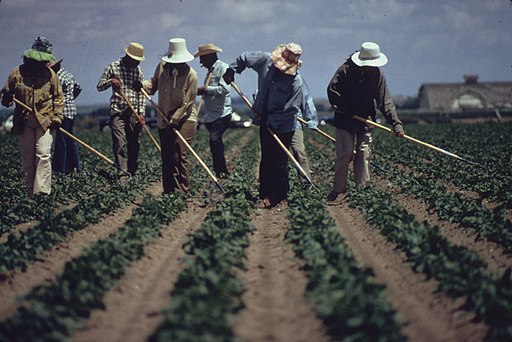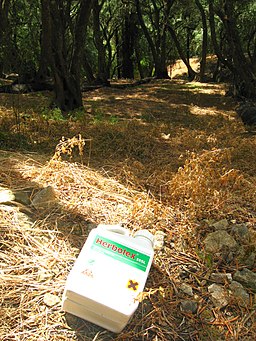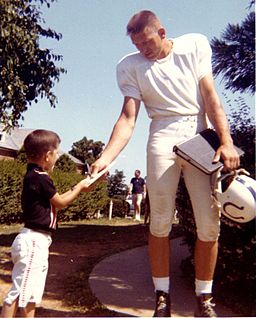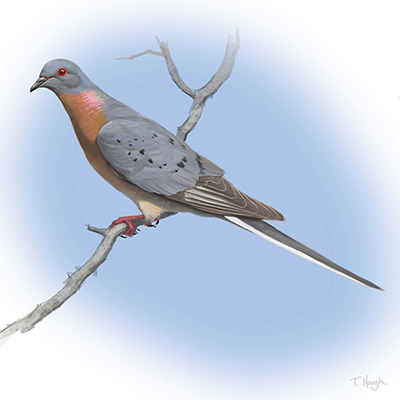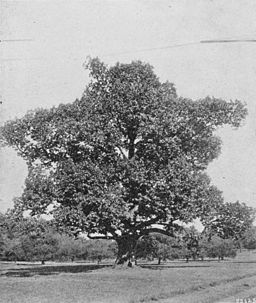The eastern half of the country has received copious rainfall this spring, and in the eastern seaboard states the rainfall has been
excessive, leading to flooding in spots like
Ellicott City, Maryland. The high rainfall amounts have led to a greater than usual amount of standing water, and because mosquitoes lay their eggs in standing water there is a
greater than usual mosquito count in the eastern United States. There was also
a mild winter preceding this spring, and that has led to high counts of ticks and other insects. People who want to spend more time outdoors as the weather warms this year must be prepared to either defend themselves or succumb to getting their blood drawn by numerous insects, taking a chance consequently on coping with a disease for which the blood sucking insects are vectors.
There are the usual recommendations from experts to cover up when outdoors in the summer when insects are most active, but it’s awfully tough to take their advice when it’s 90 degrees and the humidity is very high. Long pants tucked into high socks? Long sleeves on shirts? In order to stay comfortable, many people won’t heed that advice. The advice to wear loose fitting, light colored clothes is welcome, however, because in addition to coping with insect attacks that advice helps the wearer cope with hot weather. Above all, in more ways than one, the most important item of clothing in summer is a broad brimmed hat.
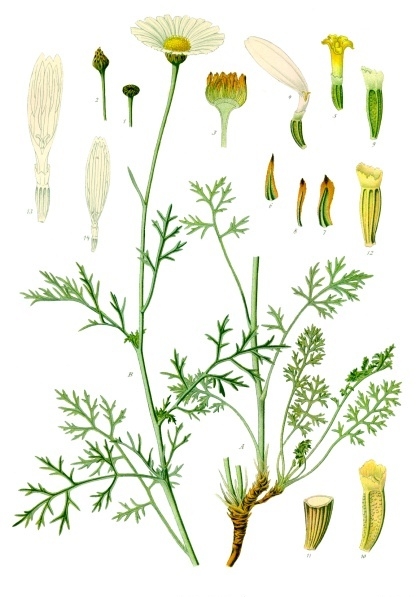 An illustration of
An illustration of Tanacetum cinerariifolium
from the 1897 edition of Köhler’s Medizinal Pflanzen
, a book on medicinal plants by Franz Eugen Köhler.A good quality broad brimmed hat will serve to ward the sun off a person’s face, neck, and ears, as well as absorb sweat before it runs down from brow into eyes, and in addition will help keep insects away from one’s head. The last statement is based on nothing more than anecdotal evidence, but test it for yourself in the course of wearing a broad brimmed hat for all its other useful qualities. Insects seem reluctant to come up under the broad brim. Is it 100% effective? No, but then very few things are 100% effective in life. Toss away that useless baseball cap and try wearing a broad brimmed hat like a boonie hat. Bucket hats, the diminutive cousins of boonie hats, do not count.
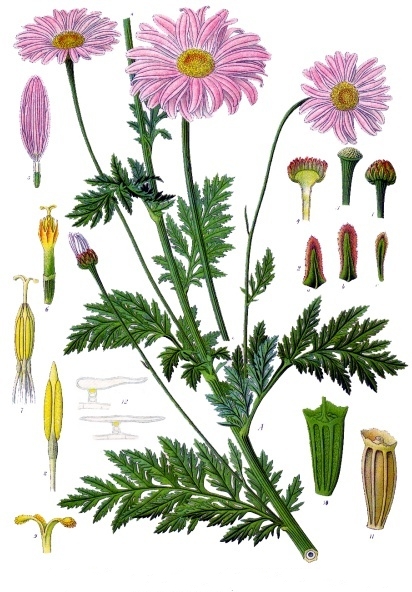 An illustration of
An illustration of Tanacetum coccineum
from the 1897 edition of Köhler’s Medizinal Pflanzen
, a book on medicinal plants by Franz Eugen Köhler.For those who would rather resort to what they believe are the more certain results yielded by chemical insect repellents, there are the usual products readily available at most stores. Try not to go overboard. Before buying those clothes soaked in
permethrin, consider eating more garlic and onions as a systemic repellent to ooze out of your pores for a day or two at a time, scaring off bugs and people alike.
Botanical repellents are generally less effective than their more renowned chemical cousins, but they also leave
a lighter footprint on the environment and perhaps on the user.
One product that straddles the border is the permethrin mentioned earlier. Permethrin is derived from flowers related to chrysanthemums, and is not a repellent but an insecticide. When you use permethrin products, insects will land on you and may get an opportunity to suck blood before they die and drop off. A repellent, of course, wards off insects before they land on you. Permethrin is more effective than other botanicals, and is generally safer for the environment and the user than chemical repellents or insecticides. It is used in some flea treatments for dogs. It is not used in flea treatments for cats, however, because it is toxic, even deadly, for cats. People who have both cats and dogs in their homes should keep in mind if they apply permethrin flea treatment to the dogs but not the cats that the permethrin can still adversely affect the cats by secondary contact. For everyone, as tempting as it is to reach for the most highly effective treatment when battling insects which can transmit troubling diseases, or at least cause discomfort, try to maintain perspective so that the treatment doesn’t end up being worse than the affliction.
— Izzy 
